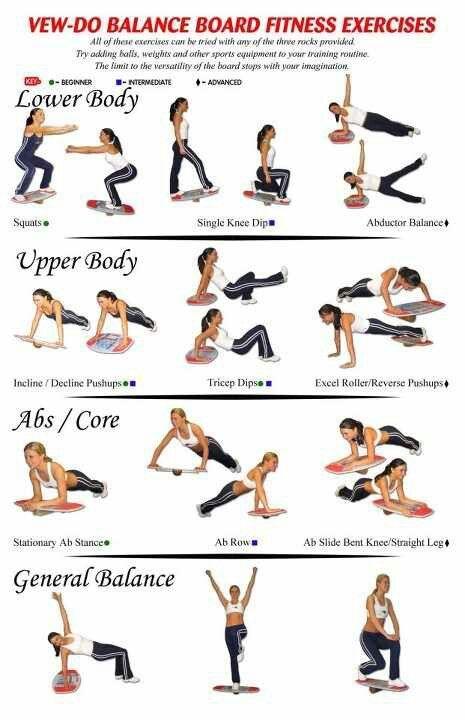Embarking on a strength training journey is like setting sail on an uncharted sea, filled with promises of transformation and empowerment. Yet, for many beginners, the voyage can quickly veer off course, riddled with common pitfalls that can hinder progress and dampen enthusiasm. In the bustling world of gyms and workout routines, the eagerness to lift heavier and see faster results often leads to missteps that could easily be avoided with the right guidance. This article delves into the top mistakes that novices make when they first venture into the realm of strength training and offers insightful strategies to steer clear of these blunders. Whether you’re just starting out or looking to refine your approach, understanding these common errors will not only enhance your performance but also ensure a safer, more rewarding fitness experience.
Choosing the Right Weight: Finding Your Perfect Starting Point
Embarking on your strength training journey can be both exciting and overwhelming. One of the most common pitfalls is selecting weights that are either too heavy or too light. Starting too heavy can lead to poor form, increased risk of injury, and discouragement due to lack of progress. On the other hand, opting for weights that are too light might not provide enough resistance to stimulate muscle growth, leaving you frustrated with the lack of results.
- Listen to Your Body: Begin with weights that challenge you, but still allow you to maintain proper form. Aim for a weight where the last few reps are tough, yet achievable.
- Focus on Form: Prioritize technique over the amount of weight. Good form ensures that you’re working the right muscles and helps prevent injuries.
- Gradual Progression: As you grow stronger, gradually increase the weight. A common guideline is to up the weight by about 5-10% once you can comfortably perform more reps than your target.
By thoughtfully selecting your starting weight, you’ll set a solid foundation for a successful and sustainable strength training journey. Remember, consistency and patience are key in achieving your fitness goals.

Form Over Ego: Mastering Technique for Long-Term Gains
In the pursuit of impressive numbers on the weight stack, many newcomers fall into the trap of prioritizing ego over form. This can lead to plateauing progress, or worse, injury. Mastering technique requires patience and humility, yet it’s a cornerstone for achieving long-term success in strength training. Here are some common pitfalls to watch out for:
- Rushing Through Reps: Speeding through exercises may seem like a shortcut to gains, but it often results in poor form. Slow down and focus on the muscle contraction and extension. Proper tempo ensures that you’re effectively targeting the intended muscle groups.
- Ignoring Proper Alignment: Misalignment can place undue stress on joints and ligaments. Always ensure your body is correctly positioned, whether you’re squatting, benching, or deadlifting. Use mirrors or ask for feedback to help maintain correct posture.
- Overloading the Bar: Lifting too heavy too soon can compromise form. Prioritize gradual weight increases and ensure you can perform exercises with the correct technique before moving up in weight. Remember, quality over quantity leads to sustainable progress.
By focusing on these aspects, beginners can set a solid foundation, allowing for continuous improvement without sacrificing their physical health. Remember, the gym is not a sprint, but a marathon—steady progress and consistency will always trump hasty ego lifts.

Creating a Balanced Routine: Avoiding Overemphasis on Favorite Exercises
Many beginners fall into the trap of focusing too much on their favorite exercises, which often leads to an imbalanced workout routine. While it’s great to have enthusiasm for certain movements, such as bicep curls or bench presses, overemphasizing these can neglect other vital muscle groups. This not only hinders overall strength development but also increases the risk of injury due to muscle imbalances. To create a well-rounded routine, consider incorporating a variety of exercises that target all major muscle groups. This approach ensures that you develop a balanced physique and improve functional strength.
- Incorporate Compound Movements: Exercises like squats, deadlifts, and pull-ups engage multiple muscle groups and are essential for building overall strength.
- Prioritize Full-Body Workouts: Instead of isolating muscles, design your routine to work different parts of the body in each session, ensuring balanced development.
- Rotate Your Exercises: Changing your routine every few weeks can prevent plateaus and keep all muscle groups engaged.
Remember, variety is key in strength training. By stepping out of your comfort zone and trying new exercises, you not only avoid overemphasis but also make your workouts more enjoyable and effective. Keep challenging your body in different ways to see continuous improvement.

Consistency is Key: Building a Sustainable Workout Schedule
One of the most common pitfalls beginners face is the lack of a structured workout routine, which can lead to inconsistent results and potential burnout. Establishing a sustainable workout schedule is crucial for making steady progress in strength training. Consistency doesn’t mean doing the same exercises daily; rather, it’s about maintaining a regular workout pattern that your body can adapt to over time. Here are some tips to help you build a schedule that sticks:
- Set Realistic Goals: Aim for a balance between challenging yourself and not overcommitting. This prevents overwhelming yourself with unrealistic expectations.
- Prioritize Rest Days: Recovery is just as important as the workouts themselves. Ensure your schedule includes adequate rest days to allow muscles to repair and grow.
- Mix It Up: Avoid monotony by incorporating a variety of exercises. This not only keeps things interesting but also ensures comprehensive muscle development.
By integrating these strategies, beginners can avoid the trap of inconsistency and create a workout routine that is both effective and sustainable in the long run. Remember, progress in strength training is a marathon, not a sprint.
Concluding Remarks
As we draw the curtain on our exploration of the top mistakes beginners make in strength training, it’s clear that knowledge is your most powerful ally. By sidestepping these common pitfalls, you pave a smoother path toward your fitness goals, ensuring that each lift and lunge brings you closer to a stronger, healthier you. Remember, the journey of strength training is as much about patience and consistency as it is about the weights you lift. Embrace the learning process, listen to your body, and don’t shy away from seeking guidance when needed. With these insights in your toolkit, you’re well-equipped to embark on a rewarding strength training journey, transforming mistakes into stepping stones toward success. Now, with newfound wisdom, go forth and lift with confidence!
